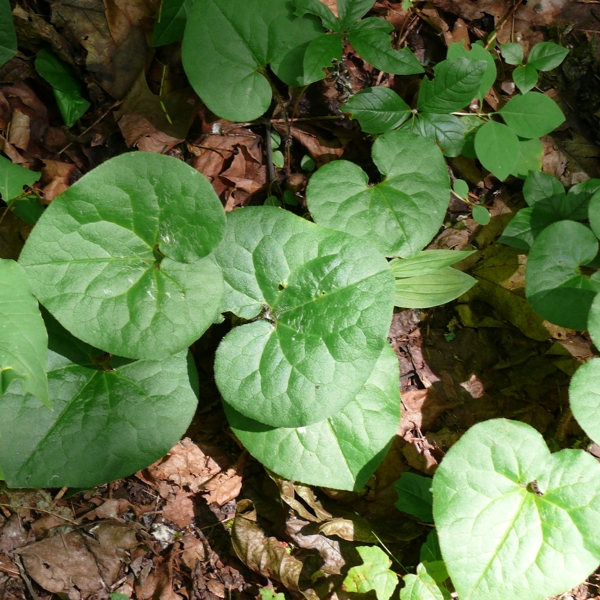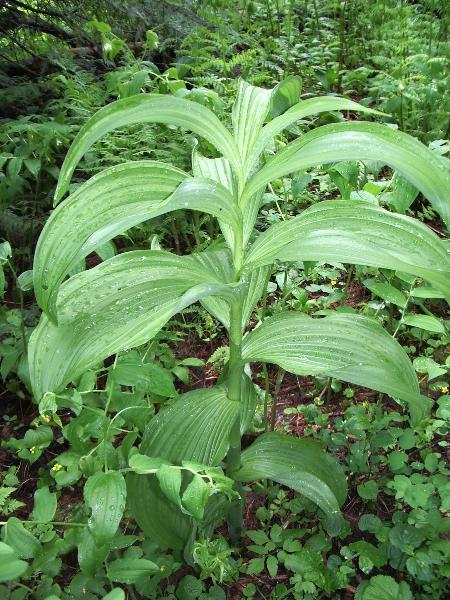Plant identification in the field can often be more difficult than one first expects. The pictures in field guides are only one example, and sometimes do not show the plant to its best advantage. Plants of the same species can vary considerably between individual plants and that’s if you can find the right page in your field manual to start with! Sometimes young plants and mature plants also look very different
(Photo: On the trail to Monica Meadows near Jumbo Pass)
When collecting plants for medicinal or culinary purposes it is essential to be very sure the plant you collecting is what you believe it to be. There are often similar looking species that may be bad tasting, ineffective, or poisonous!
You should carry a field guide appropriate to your area when hunting for plants, even if you know what it is you are looking for – you may come across a plant you don’t know, or one that looks similar to what you are collecting. It may be an unfamiliar varietal of your plant and may still be useful, or it may be poisonous, and you can use your guide to help you know if either is the case.
Most field guides will note on the plants information page if there is anything else that it can be easily confused with and will give hints on telling them apart.

For Instance, on the left above, is a photo of Wild Ginger ( Asarum caudatum) Photo Credit: Jeanne Ross, and on the right is a Kidney Leaved Violet ( Viola renifolia) Photo Credit: Jamie Fenneman. At first glance, the two plants can be difficult to tell apart when not in bloom, as both grow approximately the same height, have the same shape leaves and can be often found growing next to each other in the same type of habitat. Ginger however, smells like ginger! Don’t forget that the aroma of plants can be very distinctive, and a useful tool when harvesting.
When discovering plants in the wild, it is not enough to look only at the leaves of a plant, or its flowers, or its berries. All parts of the plant must match the description found in your guide for you to be sure it is the same plant. For example, take a look at the plants pictured below:
Clasping Twisted Stalk (
Strepoptus amplexifolius
) on the left below, Photo Credit: Rod Innes, has berries the length of its growth, and its leaves clasp around the main stem
 .
.
Hookers Fairy Bells (
Disporum hookeri
) on the right, Photo Credit: Pamela Zevit, is almost identical, but it has berries only at the top, and the leaves do not clasp around the stem.

Both of these species are often confused with the young plants of Indian Hellbore (
veratrum viride)
Photo Credit: Stephanie Louie. which is so toxic it is powdered to make a garden insecticide.

Using your Field Guide:
Many guides have general keys in them to help you narrow down your search. Using these you can often narrow it down to a few possibilites based on the pictures in the manual.
Once you have found a possibility in your field book, check the distribution of the plant, it can help you know how likely that plant is to be in your area. There will also be notes on whether the plant likes dry or wet areas to grow, and what types of elevation you may find it in. If you found a plant in a low elevation marsh, and the one in the guide likes high dry alpine areas, its unlikely to be correct.
Pay attention to how tall the plant is, and to all of its features. If the guide says it has small hairs on the leaves do you see them? How tall is the plant, does it have trailing runners? If it is flowering, or bearing fruit, what time of year is it? If your plant is flowering in the spring, check it against your guide, it is probably not the listed plant if that one flowers in the fall. What colour are the stems? Does it have a particular aroma? If it is a tree, what does the bark look like?
It may be easiest to identify some plants when they are flowering, but most plants are not in bloom for most of the year! Look for specific details on the leaves – sometimes the only difference between two species is very small when not bearing flowers or fruit.

Generally, Falsebox ( Pachistima mysinites) pictured left above, Photo Credit: Rod Innes, grows to 60cm tall, but the smaller ones closely resemble the shorter growing, Kinnikinnick ( Arctostaphylos uva-ursi) pictured right, Photo Credit: Ian Cumming. When no berries or flowers are present, the plants are often confused. Falsebox however, has small serrations at the tips of its leaves, where Kinnikinnick does not.
If the plant you are trying to identify matches the description, check all the details listed in your guide. If you are still unsure, remember that field guides do not list every species of every plant, you may have found one not in your book. Take good pictures of the plant, its features, and its surrounding habitat, and then check it against a wider database online when you get home. http://www.geog.ubc.ca/biodiversity/eflora/ is a great resource for native plants in BC
Remember, as you learn to identify some plants, it will become easier and easier to identify more. Practice makes perfect, or at least makes better, and plant ID is no exception


